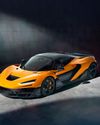
Let's start with the similarities, they both use hydrogen as fuel. Both have tailpipe emissions composed of water vapour, however, HCE also emits NOx in addition to it. Here onwards, all similarities end.
Hydrogen fuel cell is an engine with no moving parts, which lets hydrogen chemically react with oxygen within its confines of membranes and catalysts. The result of this chemical reaction is electricity, which can be used to power an electric motor, with water vapour being the only byproduct. They are composed of exotic materials such as platinum for catalysts, and also the lack of mass production renders them unaffordable for the masses for now.
Esta historia es de la edición June 2024 de TURBOCHARGED.
Comience su prueba gratuita de Magzter GOLD de 7 días para acceder a miles de historias premium seleccionadas y a más de 9,000 revistas y periódicos.
Ya eres suscriptor ? Conectar
Esta historia es de la edición June 2024 de TURBOCHARGED.
Comience su prueba gratuita de Magzter GOLD de 7 días para acceder a miles de historias premium seleccionadas y a más de 9,000 revistas y periódicos.
Ya eres suscriptor? Conectar

BULL 'CHARGE'
In conversation with Francesco Scardaoni, Region Director, Automobili Lamborghini, Asia Pacific about India's rising importance for the brand

FAREWELL TITAN
Sir Ratan Tata, proverbial father of the modern Indian automotive industry has passed away at the age of 86

RETURN OF THE SAMURAI
Toyota to return to Formula 1 with Haas

WINNING FORMULA
McLaren reasserts its supremacy in the hypercar sphere with the W1
FUTURE ICON
Ferrari asserts its dominance in the hybrid hypercar sphere with its newest entrant

BAJAJ PULSAR N125
The Pulsar N125 takes a new approach to 125cc motorcycling

TRACING RIGHT LINES
We test the newest offering from Reise Moto at CoASTT

THE REAL DEAL
The Volkswagen GT Line ticks all the boxes for a complete driver’s car

BYD eMAX7
Is the eMAX 7 the ultimate family-friendly EV?

KIA CARNIVAL LIMOUSINE
Kia’s premium MPV gets bigger, plusher and more luxurious